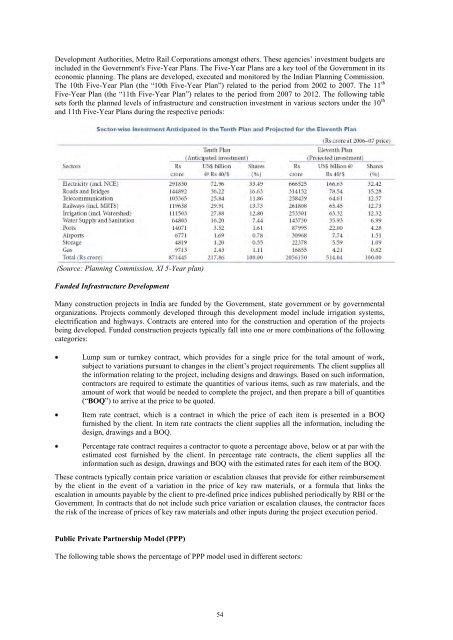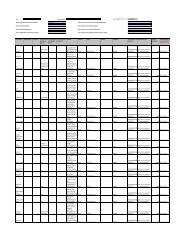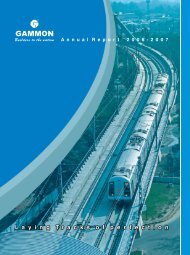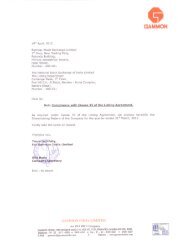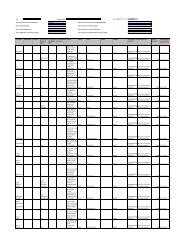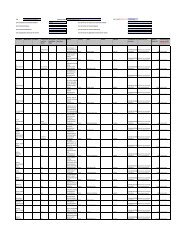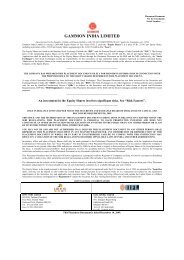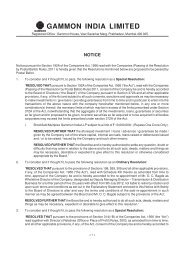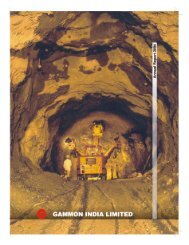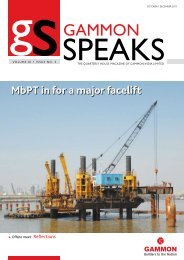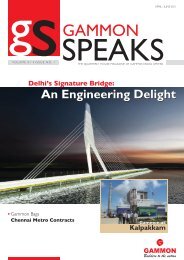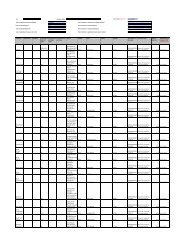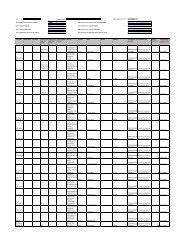GAMMON INDIA LIMITED
GAMMON INDIA LIMITED
GAMMON INDIA LIMITED
Create successful ePaper yourself
Turn your PDF publications into a flip-book with our unique Google optimized e-Paper software.
Development Authorities, Metro Rail Corporations amongst others. These agencies‘ investment budgets are<br />
included in the Government's Five-Year Plans. The Five-Year Plans are a key tool of the Government in its<br />
economic planning. The plans are developed, executed and monitored by the Indian Planning Commission.<br />
The 10th Five-Year Plan (the ―10th Five-Year Plan‖) related to the period from 2002 to 2007. The 11 th<br />
Five-Year Plan (the ―11th Five-Year Plan‖) relates to the period from 2007 to 2012. The following table<br />
sets forth the planned levels of infrastructure and construction investment in various sectors under the 10 th<br />
and 11th Five-Year Plans during the respective periods:<br />
(Source: Planning Commission, XI 5-Year plan)<br />
Funded Infrastructure Development<br />
Many construction projects in India are funded by the Government, state government or by governmental<br />
organizations. Projects commonly developed through this development model include irrigation systems,<br />
electrification and highways. Contracts are entered into for the construction and operation of the projects<br />
being developed. Funded construction projects typically fall into one or more combinations of the following<br />
categories:<br />
Lump sum or turnkey contract, which provides for a single price for the total amount of work,<br />
subject to variations pursuant to changes in the client‘s project requirements. The client supplies all<br />
the information relating to the project, including designs and drawings. Based on such information,<br />
contractors are required to estimate the quantities of various items, such as raw materials, and the<br />
amount of work that would be needed to complete the project, and then prepare a bill of quantities<br />
(―BOQ‖) to arrive at the price to be quoted.<br />
Item rate contract, which is a contract in which the price of each item is presented in a BOQ<br />
furnished by the client. In item rate contracts the client supplies all the information, including the<br />
design, drawings and a BOQ.<br />
Percentage rate contract requires a contractor to quote a percentage above, below or at par with the<br />
estimated cost furnished by the client. In percentage rate contracts, the client supplies all the<br />
information such as design, drawings and BOQ with the estimated rates for each item of the BOQ.<br />
These contracts typically contain price variation or escalation clauses that provide for either reimbursement<br />
by the client in the event of a variation in the price of key raw materials, or a formula that links the<br />
escalation in amounts payable by the client to pre-defined price indices published periodically by RBI or the<br />
Government. In contracts that do not include such price variation or escalation clauses, the contractor faces<br />
the risk of the increase of prices of key raw materials and other inputs during the project execution period.<br />
Public Private Partnership Model (PPP)<br />
The following table shows the percentage of PPP model used in different sectors:<br />
54


